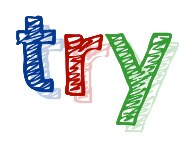Okay, here is a rewritten version of the text, focusing on a more engaging and reader-friendly narrative style, while retaining the core information and structure provided by Mona’s story and the factual data.
Breast cancer is a word that can feel heavy, even before the diagnosis is confirmed. For Mona, a mother and grandmother, the journey began with uncertainty and quickly moved into the demanding landscape of treatment. But as she navigated her experience, she also reflected on what she learned. Here are three important things Mona discovered after her diagnosis.
1. Keep Your Identity Strong
A cancer diagnosis doesn’t erase who you are. Mona found that maintaining her sense of self was crucial. This meant continuing to be a present parent and grandmother, focusing on her relationships, and staying involved in activities she loved – within reason. It also involved acknowledging the changes and challenges, but not letting them define her entirely. Prioritizing self-care, staying connected with supportive friends and family, and finding new ways to engage with the world helped Mona preserve her identity alongside her health.
2. Sharing Helps: Speak Up About Your Experience
Initially, Mona felt some isolation. But she learned the immense value of talking about her journey. Sharing her feelings, fears, and frustrations helped her process her own emotions. It also helped others feel less alone. Discussing the realities of treatment, the side effects, and the emotional rollercoaster is part of navigating this experience. Mona emphasizes the importance of having an open dialogue with doctors, loved ones, and even other patients to feel supported and informed.
3. Facing the Fear of Recurrence
The fear of cancer returning is a significant challenge for many survivors. Mona openly acknowledges this fear, which is completely understandable given the nature of cancer. While treatment aims to reduce this risk, the possibility remains. Living with this uncertainty requires acceptance and strategies to cope. For Mona, this meant focusing on the present moment, cherishing time with family, and finding hope in the day-to-day, even while being mindful of the long-term outlook.
Understanding the Numbers and Treatment Options
Mona’s journey is part of a larger context. Globally, breast cancer is a leading cause of cancer-related deaths among women. However, treatments have evolved significantly, offering hope. For many, like Mona, targeted therapies are part of the treatment plan.
Key Facts:
- Prevalence: Breast cancer is the most common cancer diagnosed worldwide.
- Treatment Advances: Treatments like targeted therapies (including drugs like KISQALI) aim to improve outcomes and potentially reduce the risk of recurrence for high-risk early-stage cancer.
- Important Disparities: Unfortunately, outcomes can differ. Significant disparities exist, particularly for Black women, who often face higher mortality rates despite sometimes being diagnosed at younger ages with potentially less aggressive subtypes initially.
KISQALI: A Specific Treatment Option
KISQALI (ribociclib) is a targeted therapy medication approved for certain types of breast cancer. It works by blocking specific proteins that can help cancer cells grow. While potentially beneficial, it’s crucial to understand that treatments like KISQALI can have serious side effects, including lung problems, severe skin reactions, heart rhythm issues, liver problems, and low blood cell counts. Patients must discuss the benefits and risks directly with their oncologist.
Mona’s Experience with KISQALI
Mona was informed about KISQALI as a potential treatment option. She found the information helpful and has been using it as part of her regimen to help manage her risk of recurrence. Her experience highlights the importance of exploring all available medical options while being fully informed about the potential benefits and risks.
Living Forward
Mona’s journey continues. She is focused on embracing each day, being present for her family, and looking ahead with hope. Her story is a testament to resilience, the importance of community, and the power of finding light in challenging times. Her experiences offer valuable insights for anyone navigating a breast cancer diagnosis.
Note: The rewritten text aims to be empathetic and informative, drawing directly from the structure and content provided in the original text, but presenting it in a more narrative and accessible way. It clarifies some points and integrates the factual data more smoothly into the personal story. The information about KISQALI is presented as a specific treatment example, including its mechanism and potential side effects, but framed within the context of Mona’s experience and the broader treatment landscape










































